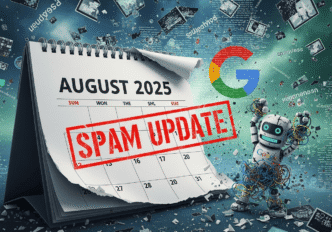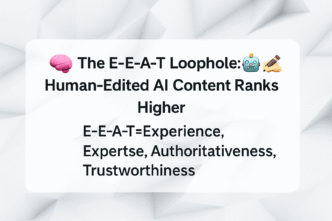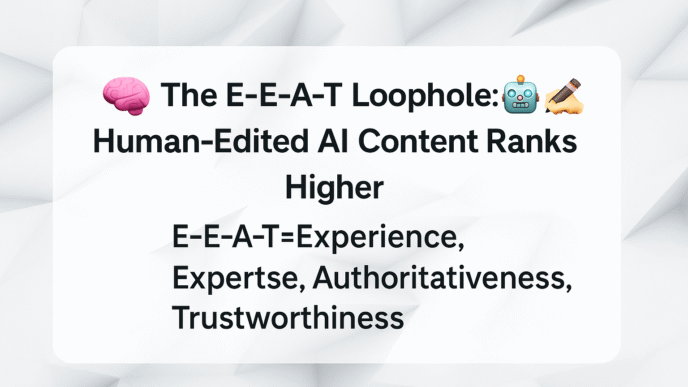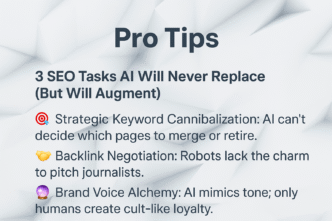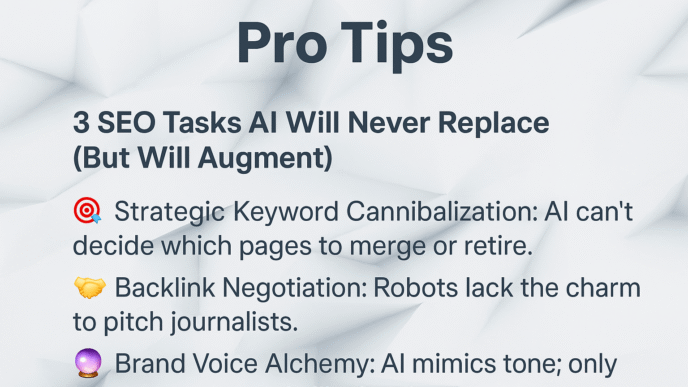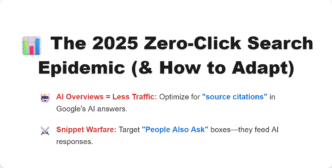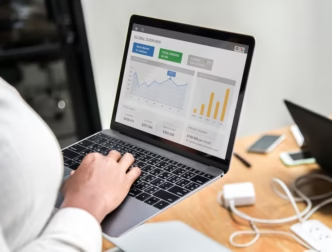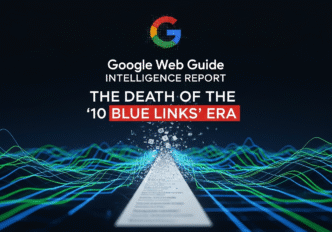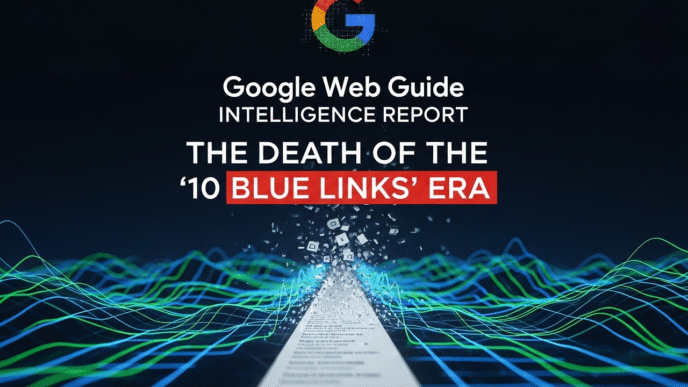Table of Contents
Toggle
Executive Summary
Google’s August 2025 Spam Update represents a significant milestone in the search engine’s ongoing battle against manipulative content practices. After an eight-month hiatus from spam-focused updates, Google launched this comprehensive algorithmic revision on August 26, 2025, completing its 27-day rollout on September 22, 2025. This extended deployment period—nearly four times longer than the previous December 2024 spam update—signals the depth and complexity of changes implemented to combat evolving spam tactics, particularly AI-driven content manipulation.
Timeline & Key Milestones
Critical Dates
- Launch: August 26, 2025, at 9:00 AM PST (12:00 PM ET)
- Completion: September 22, 2025, at approximately 2:00 AM ET
- Duration: 27 days (significantly longer than typical 7-14 day rollouts)
- First Impact: Visible ranking fluctuations within 24-48 hours
Rollout Phases
The update exhibited a unique two-wave pattern:
- Wave 1: August 27-28, 2025 – Initial ranking volatility spikes
- Cooling Period: Early September
- Wave 2: September 9-onwards – Renewed turbulence and sustained impact
Expert Analysis & Industry Response
Glenn Gabe (GSQi) – Technical Assessment
“This update appears to target programmatic doorway pages, spinning content across pages targeting the same/similar topic. We’re seeing huge drops for sites immediately after release.”
Glenn Gabe’s analysis highlights the update’s surgical precision in targeting:
- Programmatic content generation
- Doorway page strategies
- Content spinning tactics
- Multi-page keyword stuffing schemes
Key Insight: Gabe noted the domino effect on AI search platforms, stating: “Drop out of Google? You might very well drop out of other tools leveraging Google’s results… AI Overviews, ChatGPT, Perplexity.”
Lily Ray (Amsive Digital) – Strategic Perspective
“Wonder if this will hit the influx of GEO spam”
Ray’s observation points to emerging spam tactics involving geographical manipulation and location-based content abuse.
Barry Schwartz (Search Engine Roundtable) – Real-Time Monitoring
“We are likely seeing the effect within 24 hours after it was announced… pretty intense and not done rolling out yet.”
Schwartz documented unprecedented immediate impact, contrasting with typical 2-3 day delay patterns in previous updates.
Comparative Analysis: August 2025 vs. Previous Updates
Duration Comparison
| Update | Duration | Intensity | Primary Focus |
|---|---|---|---|
| August 2025 | 27 days | High | AI content abuse, programmatic pages |
| December 2024 | 7 days | Medium | Traditional spam patterns |
| March 2024 | 45 days | Very High | Scaled content abuse, site reputation |
| June 2024 | 7 days | Low | Link spam specific |
Impact Methodology Evolution
Previous Approach: Sequential, predictable rollout patterns August 2025 Innovation: Multi-phase deployment with sustained volatility periods
Technical Deep Dive: SpamBrain AI Enhancement
Algorithm Architecture
The August 2025 update leverages Google’s enhanced SpamBrain AI system, first introduced in 2018 but significantly upgraded to address:
AI-Generated Content Detection
- Pattern recognition for machine-generated text
- Semantic analysis of artificial content flows
- Cross-reference validation against training datasets
Programmatic Page Identification
- Template-based content recognition
- Parameter manipulation detection
- Doorway page clustering analysis
Authority Abuse Prevention
- Site reputation scoring adjustments
- Third-party content quality assessment
- Parasite SEO mitigation protocols
Data Analysis: Winners, Losers & Trends
SISTRIX Visibility Analysis
Key Finding: The update demonstrated “penalty-only” characteristics with limited broad re-ranking effects.
“Examples of spammy domains losing visibility can be seen, but the effects of the spam update are not causing major changes in the SERPs so far.” – SISTRIX Report
Immediate Impact Metrics
- 24-48 Hour Response: Unprecedented for spam updates
- Sustained Volatility: 27-day continuous fluctuation period
- Sector-Specific Targeting: Programmatic content, affiliate schemes, AI-generated materials
Recovery Patterns
Historical data suggests recovery timelines of 3-6 months for compliant sites, with Google’s systems requiring extended observation periods to validate sustained compliance.
Targeted Spam Categories & Examples
1. Programmatic Doorway Pages
Definition: Multiple pages with nearly identical content optimized for different keyword variations
Expert Quote:
“Doorway pages galore with a side of thin content… barely any content on those pages, and they definitely did not meet or exceed user expectations.” – Glenn Gabe Case Study Analysis
2. AI Content Spinning
Characteristics:
- Automated content generation across multiple pages
- Synonym replacement without value addition
- Template-based article structures
- Lack of original research or insights
3. Scaled Content Abuse
Manifestations:
- Mass production of low-value articles
- Automated content farms
- Topic dilution strategies
- Volume-over-quality approaches
4. Site Reputation Abuse (Parasite SEO)
Examples from Expert Analysis:
- Forbes affiliate sections
- Major publisher third-party content
- Authority domain exploitation
- Brand name manipulation tactics
Industry Impact Assessment
Immediate Casualties
Publishing Sector:
- Independent content creators reporting significant visibility drops
- Niche informational sites experiencing indexing difficulties
- Product review websites seeing sustained declines
E-commerce Impact:
- Affiliate marketing sites heavily affected
- Comparison shopping platforms reporting volatility
- Automated product description sites penalized
Beneficiaries
User-Generated Content Platforms:
- Reddit discussions gaining prominence
- Quora answers rising in rankings
- Forum-based content receiving visibility boosts
- Community-driven information sources prioritized
Technical Complications: The &num=100 Parameter Removal
Measurement Crisis
Coinciding with the spam update, Google discontinued support for the &num=100 search parameter, creating widespread analytics confusion:
Impact on SEO Tools:
- Third-party rank trackers requiring recalibration
- Bulk scraping methodologies disrupted
- Search Console impression reporting anomalies
- Data collection standardization challenges
Expert Commentary:
“Google Search Console was reporting massive impression drops since the 100-parameter results were removed… widespread confusion in SEO data reporting.” – Editorial Analysis
Recovery Strategy Framework
Immediate Actions (0-30 Days)
1. Compliance Audit
- Review Google’s spam policies comprehensively
- Identify potential violations across site architecture
- Document current content quality standards
- Assess automated content generation usage
2. Content Quality Assessment
- Evaluate unique value proposition of each page
- Remove duplicate or near-duplicate content
- Enhance thin content with substantial information
- Implement original research and data integration
3. Technical Infrastructure Review
- Eliminate doorway page structures
- Consolidate redundant content variations
- Optimize internal linking strategies
- Remove programmatic page generation systems
Medium-Term Strategy (30-90 Days)
4. Editorial Standards Implementation
Quality Checklist:
☐ Original research or unique insights
☐ Expert authorship and attribution
☐ Comprehensive topic coverage
☐ User-focused content structure
☐ Regular content updates and maintenance
5. Authority Building Initiatives
- Develop expertise-based content hubs
- Implement author bio and credential systems
- Create subject matter expert networks
- Establish editorial review processes
Long-Term Positioning (90+ Days)
6. Sustainable Content Strategy
- Focus on evergreen, authoritative content
- Develop community engagement mechanisms
- Implement user feedback integration systems
- Create content update and refresh protocols
Expert Tips & Best Practices
Content Creation Guidelines
From Industry Leaders:
“Focus on expertise, authoritativeness, and trustworthiness. Google can’t possibly know everybody in the world, but they’re trying through the Knowledge Graph.” – Lily Ray on E-A-T Implementation
Actionable Recommendations:
Original Value Creation
- Conduct primary research
- Provide unique analytical perspectives
- Include expert commentary and quotes
- Offer actionable, implementable advice
Technical Excellence
- Implement structured data markup
- Optimize page loading performance
- Ensure mobile-first responsive design
- Maintain clean, semantic HTML structure
User Experience Optimization
- Design for user intent fulfillment
- Minimize bounce rates through engagement
- Implement clear navigation structures
- Provide comprehensive internal linking
Monitoring & Measurement
Essential Tools & Metrics:
- Google Search Console: Core performance tracking
- SISTRIX Visibility Index: Comparative ranking analysis
- SEMrush/Ahrefs: Keyword position monitoring
- Google Analytics 4: User behavior assessment
Key Performance Indicators:
- Organic traffic stability and growth
- Keyword ranking consistency
- User engagement metrics (time on page, bounce rate)
- Search Console impression and click data
Future Implications & Predictions
Emerging Trends
AI Content Detection Evolution: The August 2025 update suggests Google’s increasing sophistication in identifying AI-generated content, signaling future challenges for:
- Automated content creation tools
- AI writing assistants for SEO
- Template-based content strategies
- Mass content production methodologies
Authority Verification Systems: Enhanced focus on site reputation abuse indicates development of:
- Author credibility scoring systems
- Content ownership verification protocols
- Third-party content quality assessment tools
- Brand authority measurement frameworks
Strategic Recommendations for 2026
1. Investment in Human Expertise
- Prioritize subject matter expert content creation
- Develop in-house editorial teams
- Establish expert review processes
- Create credibility verification systems
2. Quality Over Quantity Philosophy
- Reduce content production volume
- Increase per-piece content investment
- Focus on comprehensive topic coverage
- Implement rigorous editorial standards
3. Community Integration Strategies
- Develop user-generated content platforms
- Create expert community networks
- Implement social proof mechanisms
- Foster authentic engagement ecosystems
External Resources & Further Reading
Official Google Documentation
Expert Analysis Platforms
- Search Engine Roundtable – Barry Schwartz’s daily updates
- SISTRIX Blog – Data-driven update analysis
- Search Engine Land – Industry news and insights
Professional SEO Tools
- Google Search Console
- SISTRIX Toolbox – Visibility tracking
- SEMrush – Comprehensive SEO analysis
- Ahrefs – Backlink and keyword research
Conclusion
The Google August 2025 Spam Update represents a paradigm shift in search engine spam detection, combining advanced AI capabilities with extended deployment methodologies to combat sophisticated manipulation tactics. The 27-day rollout period, unprecedented immediate impact, and focus on AI-generated content abuse signal Google’s evolving approach to maintaining search quality in an increasingly automated digital landscape.
Key Takeaways:
- Quality and originality remain paramount in content strategy
- Technical sophistication alone cannot substitute for genuine value creation
- User-focused content continues to outperform algorithm-targeted approaches
- Sustainable SEO practices prove more resilient than short-term optimization tactics
Organizations investing in authentic expertise, original research, and user-centric content development will find themselves better positioned for long-term search success, while those relying on automated or manipulative practices face increasing algorithmic scrutiny and potential penalties.
The update’s completion marks not an end, but a evolution in the ongoing balance between technological advancement and content quality maintenance in search engine optimization.

